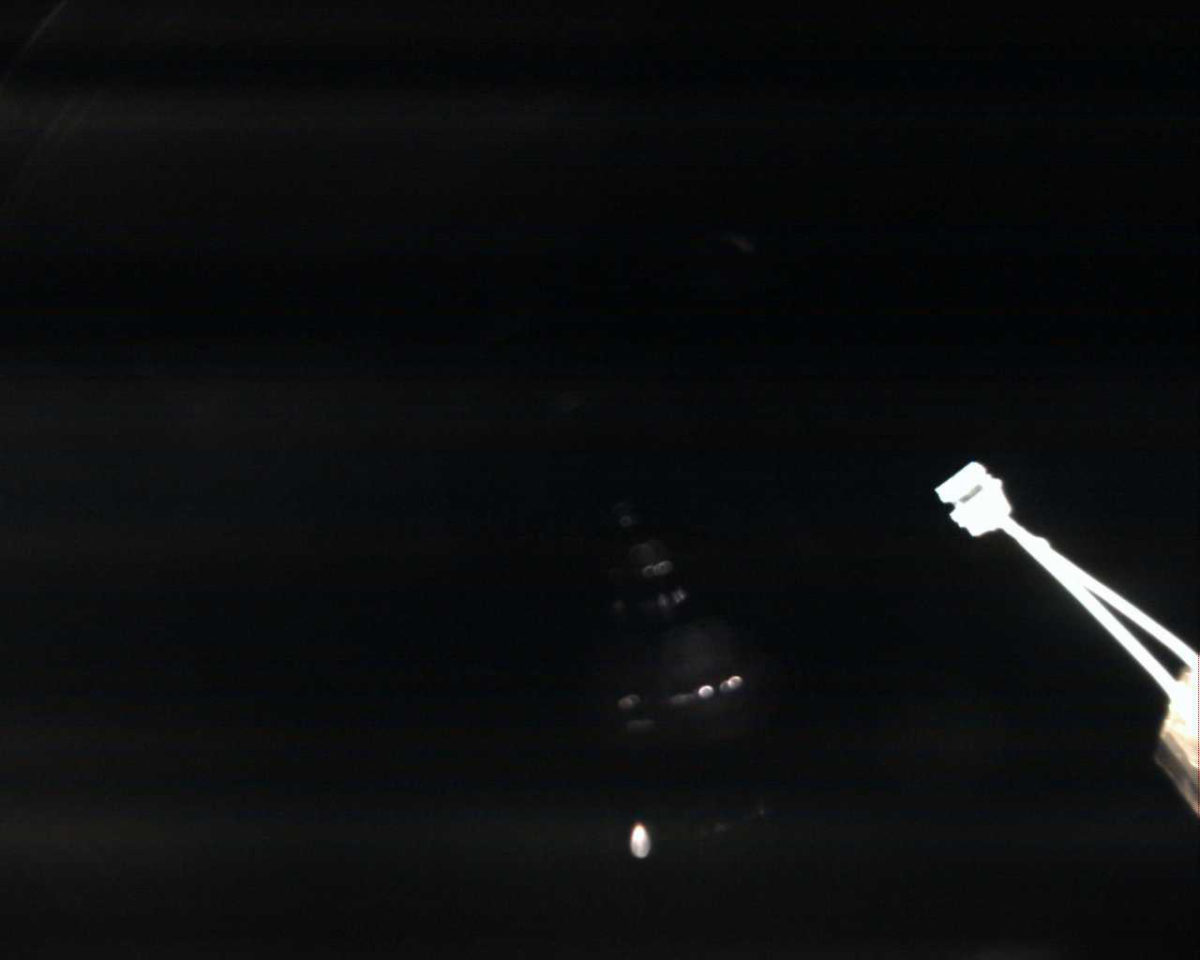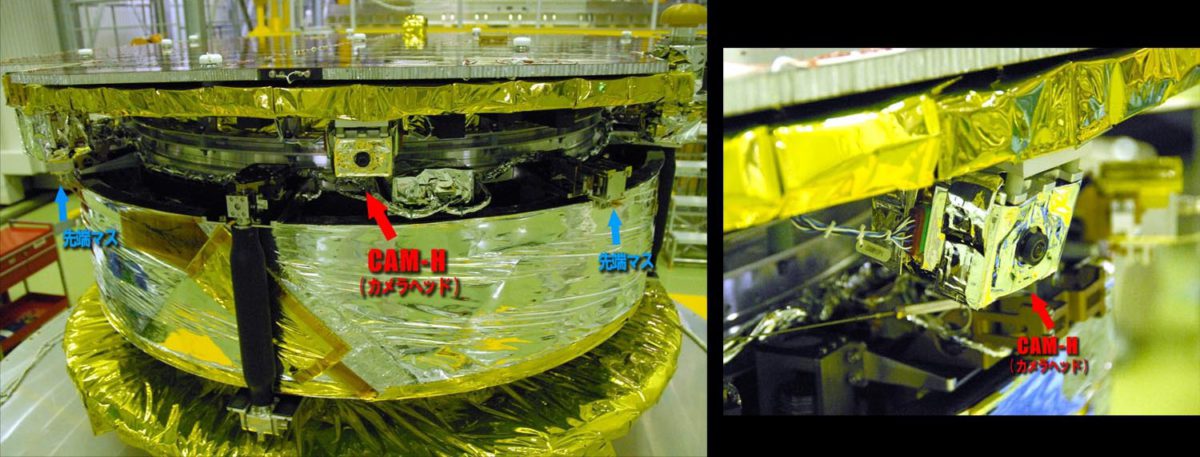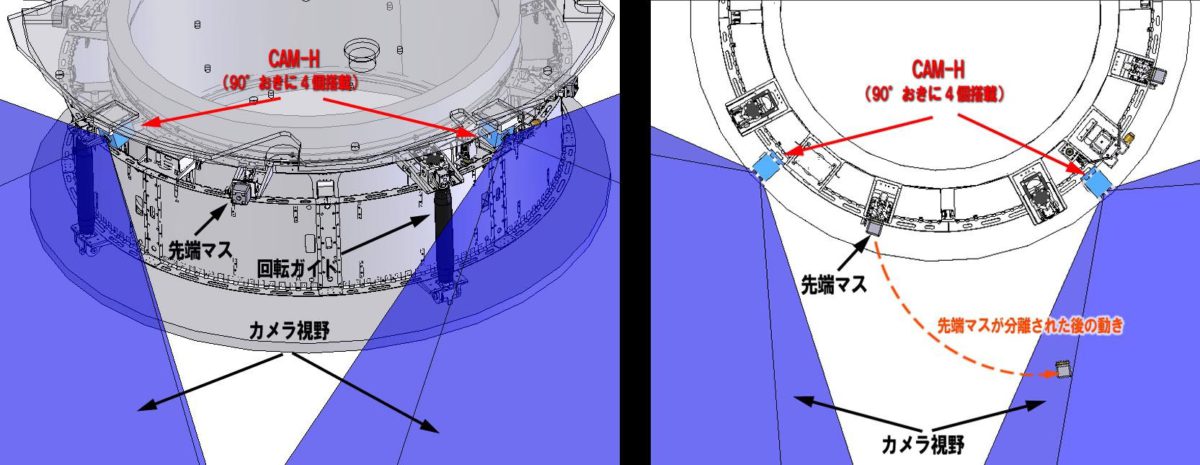Emily Lakdawalla • May 31, 2010
Photo proof of good progress on IKAROS sail deployment
The images below are self-portraits by IKAROS. While I think it is automatically cool for spacecraft to take photos of themselves in places far beyond Earth, they usually do so for a purpose other than vanity. In this particular case, they're photo proof that the multi-step process of the deployment of IKAROS' square solar sail is going according to plan! I took them from this JAXA site (hat tip to "Punkboi" for pointing out the update).

What exactly are we looking at? First, here's an explainer from the IKAROS press kit that shows the steps involved in the deployment process. I believe -- but am not certain -- that the photos above document the successful completion of the second step in the top row. My reasons for that have to do with the helpful spacecraft diagrams that JAXA posted along with the camera images (see below). If I have correctly interpreted the Google translation of the JAXA update, the sail monitoring camera images were taken on May 28.
Here are a couple more images from the JAXA update that help to document what we're seeing. First, a photo of the spacecraft showing the relative positions of tip masses (blue text) and cameras (red):

And here's a diagram illustrating what the cameras should see once the tip masses are deployed. Cameras are marked by red text with their fields of view in blue; the orange text marks the location of a tip mass after it's deployed.

The press kit explainer states that the tip mass deployment happened while the spacecraft was rotating at 2 rotations per minute (rpm). According to IKAROS' Twitter feed, the spacecraft is now up to 25 rpm; that must mean they're proceeding with the steps leading to "first stage deployment," in which the still-fan-folded sails will be dragged outward by the tip masses. I'm looking forward to pictures of that!
Support our core enterprises
Your support powers our mission to explore worlds, find life, and defend Earth. You make all the difference when you make a gift. Give today!
Donate

 Explore Worlds
Explore Worlds Find Life
Find Life Defend Earth
Defend Earth





